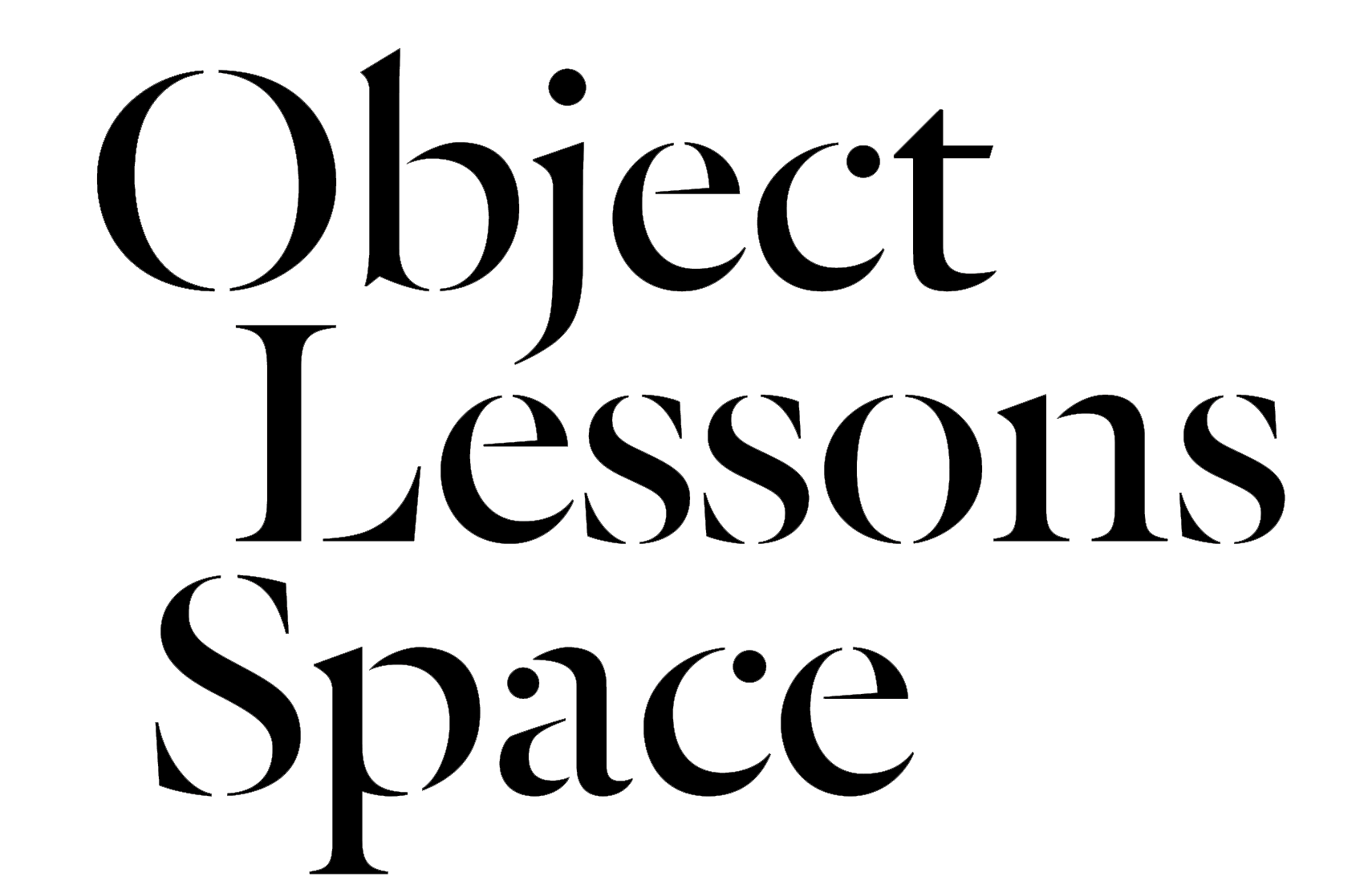Johann Yamin works across video, internet, and installation; he is also involved in curatorial work, acts of support, and writing. His topics of interest include new media technology, optics, affect, cinema, noncinema, video games, and media histories. His projects and short films have been presented in Singapore and New York.
We met with the artist to talk about the objects and artworks that have piqued the artist’s interest over the years and how he has incorporated that into some of his works. With a selection of works that range from websites to video games and digital artworks, this was a deep dive into the constellations surrounding technology and how we relate to it.
We met with the artist to talk about the objects and artworks that have piqued the artist’s interest over the years and how he has incorporated that into some of his works. With a selection of works that range from websites to video games and digital artworks, this was a deep dive into the constellations surrounding technology and how we relate to it.
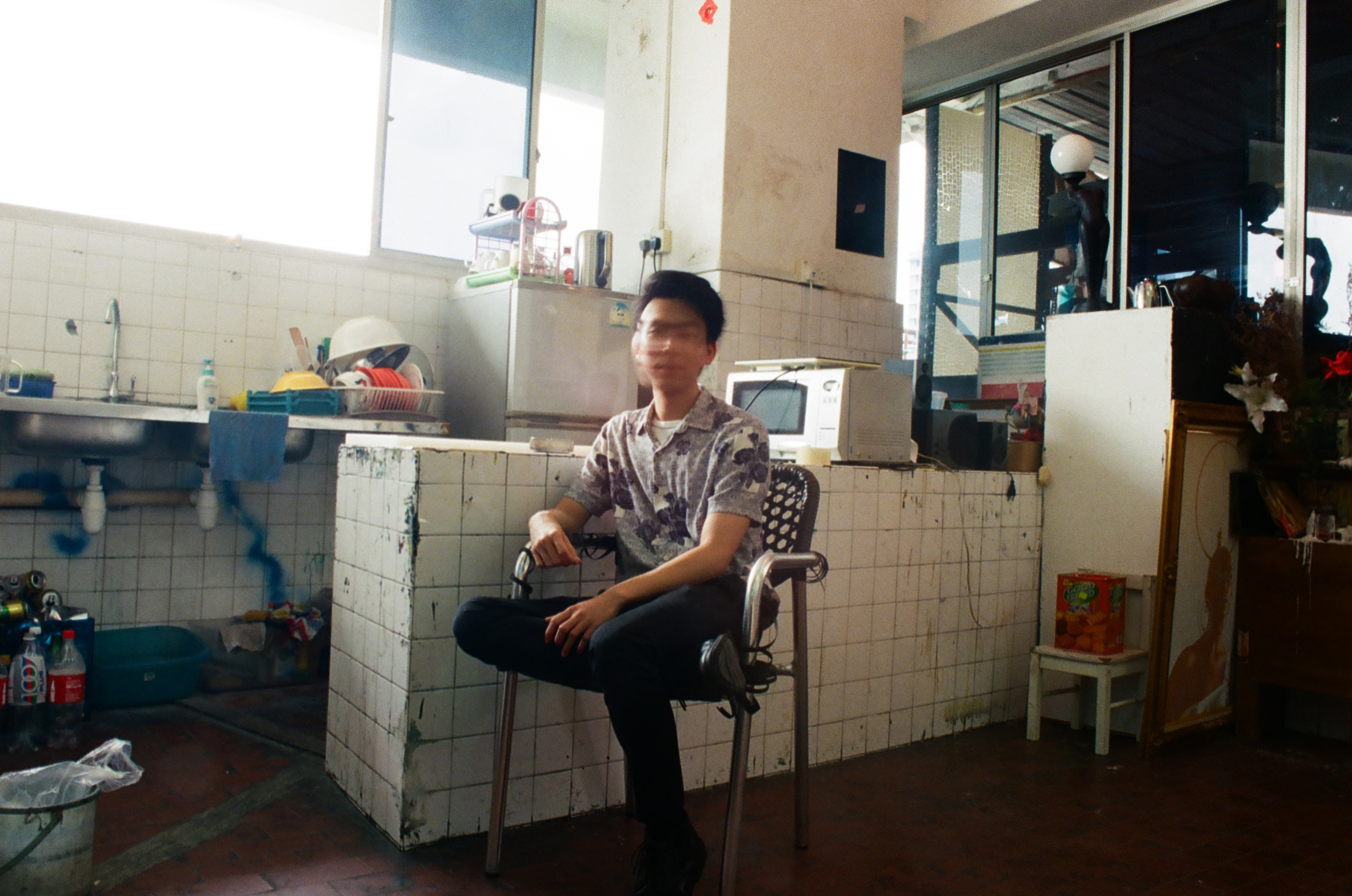
Let’s start with how you put this selection together. Most of the objects and artworks that you’ve picked out are digital in nature. What drew you towards picking out such things?
Looking at objects is often associated with an art historical approach, with formal analysis, for instance, being a part of that. Thinking along broader shifts towards discursive practice, I’m hoping to expand upon this focus on physical objecthood. I'm broadly interested in technology and digital culture, so I thought to bring the discussion of objects into a different kind of material sphere.
When scholars, academics and hobbyists were first formalising the discipline of art history, there was great emphasis placed on the formal qualities of a work. In some ways, this served as a means of creating a standard language around a burgeoning subject area. Now that we’re looking at materials that sit outside of the immediate physical sphere, there can sometimes be an impulse to try to contain or tame this through vocabulary that has already been established, even this vocabulary no longer fits well. Do you see that happening with how we talk about works in the digital sphere, or do you see a whole new language emerging to deal with these new forms?
It’s not that nobody is thinking about new media practices here: I really enjoy Kenneth Tay’s FLAT.SPACES project about tsunamii.net, and he theorises about their work beyond a strictly art-historical frame, also drawing upon media theory. I also came across an essay by Adrian Tan examining the works of Urich Lau in relation to the notion of the smart city, though that text draws much more upon established canons of Western art history. Overall my understanding is that there seemed to be much more interest in theorising or researching about new media art here in the early 2000s, with things like the Cyberarts/Cyberculture Research Initiative (CCRI) at the National University of Singapore (NUS) active back then.
I think art history’s broader relevance has increasingly been called into question—I’m thinking of the 2016 Frieze panel that’s often cited as a surface of emergence. That panel proposed that the contemporary curator is perhaps more of an autodidactic polymath rather than someone technically trained in the field of art history specifically; they are expected to constantly be dipping their tentacles into different discursive spheres simultaneously.
Even more broadly, with the dematerialisation of strictly discrete disciplines, each field finds itself co-opting the language of another to make up for so-called inadequacies.
That would mean that certain gaps in art history would exist as well. If we don’t know how to write about something, the act of recording or historicising certain periods often falls through the cracks as well.
Not to be unfair to the field of art history—I understand there are shifts, for instance, towards thinking about a more ‘global’ art history, to recalibrate toward more ‘inclusive’ postcolonial leanings. I do feel that art history has its place in helping us understand contemporaneity, and I enjoy the work of many an individual who tend to be bracketed under the categorisation of ‘art historian’. For me, art history operates in tandem with many other discursive fields.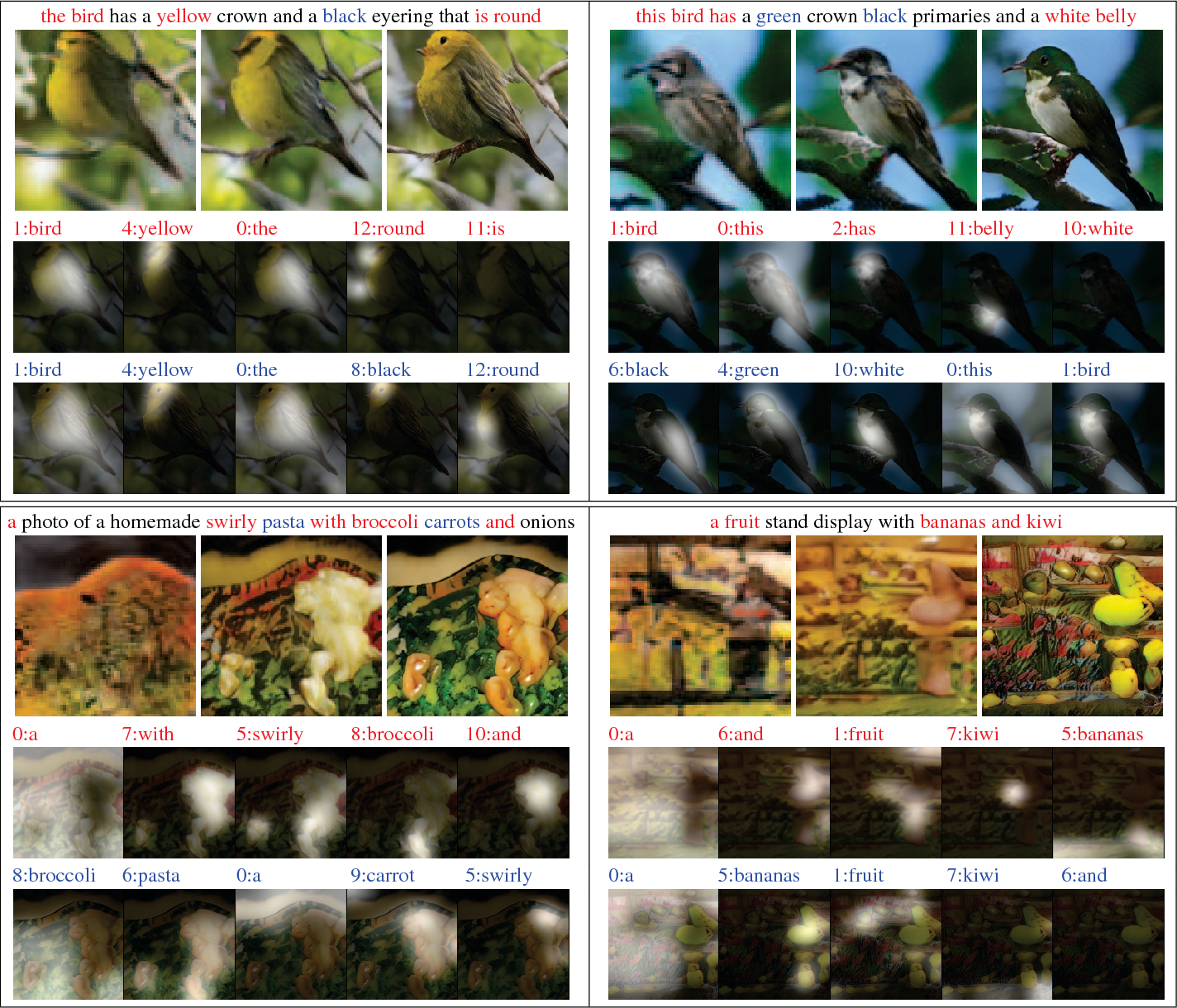
¹ AttnGAN (Attentional Generative Adversarial Networks)
With your selection of objects, there is a keen sense of them being connected to each other in networks of meanings, themes and ideas. Let’s start with the images generated by Attentional Generative Adversarial Networks (AttGAN). There’s a huge element of surprise embedded into working with such images, because the end result often lies outside of one’s control. You’re currently working with these generated images, and incorporating them into a collaborative work you’re making with Luca Lum, Kin Chui, and Weixin Chong from soft/WALL/studs. How do you approach that space of liminality where your authorship or agency ends, and where chance and free play begin?
Latching onto the idea of free play in a work: Perhaps it’s not just free play, but also a kind of foreplay—or a striptease, where just enough is revealed, and it’s the outlines of unknowing that generate the most titillation. This has more to do with the sort of works that I like, which tend to examine dense networks of meaning and knowledge—it often isn’t possible to articulate ideas with absolute clarity or in a linear form, so this tease, moving between the outlines of knowing, unknowing, and incomprehension are very much embedded within such works. I’m thinking of a quote from Roland Barthes’ The Lover’s Discourse that my friend, Berny Tan, brings up in her own practice, though I’m using it a little differently here: “I want you to know that I am hiding something from you”.
Letting go of authorship is not much of a problem for me in that I feel every act of making is contingent upon things you have absolutely no control over. We’re always moving between probabilities; doors that open, and doors that shut. In terms of collaborative work as a member within soft/WALL/studs, I’ve heard Kin put it in a way that I like, in that it’s often about locating rhythms and counter-rhythms—for me, it’s not about achieving seamless harmonisation.
Leaving it to a machine, for example, to generate these images doesn’t bother me—in fact, I think it makes the whole process a lot more interesting because it foregrounds how nebulous technology is. Often, it’s thought of as this clinical or linear entity, but there’s really a sensuous organicity about it, and this is reflected in the sort of images that are produced. This particular neural network is a text-to-image generator, and it draws from the large dataset of images it’s trained upon to try and create an image based on the descriptors I’ve input. In trying to simulate neural processes, the machine produces these alien visualities that are strange and warped, sitting between the biological and abiological. I’ve mainly accessed this topic through scientific papers, and the sort of language used is not something I’m formally trained in. Every time I try to speak of it simply, I feel like I’m not correctly communicating the process.
I’ll be incorporating these images as videos within the Detour Pavilion, a work as part of the Singapore Night Festival. For me, the work is about disorientating or detouring from the spectacle of the festival itself, which happens to coincide with the month-long Hungry Ghost Festival. We’re working with a traditional sign painter to produce elements of the pavilion’s design—they’ve done hand-drawn signs for decades for various local festivities and events, such as decorations for getai stages. So for me, this work is about following along these detours or tangents, a kind of possession and seizure whether through oblique references to the getai stage or by examining prison histories of the Bras Basah district, the very site where the festival is held. It moves through underworlds, not just in the sense of the Hungry Ghost festival, but in terms of historic delineations of illegality or criminality performed by the state.
I wanted to tie the work in with contemporary prisons and technologies that are used to discipline or surveil fugitivity, hence the use of AttGAN. There are reports of how artificial intelligence is being harnessed for prisons in Singapore, monitoring whether inmates are involved in fights using human behaviour detection. I’d input phrases, texts, and utterances relating to the historic Bras Basah convict prison and worked with the strange visuals generated. In that sense I’m using this predictive technology to generate visualisations of a past that is less known; an inversion of machine learning’s utility in its usual orientation towards predicted futures. These videos serve as spectral maps or spirit landscapes; artificial intelligence generating visuals for nested underworlds within the pavilion structure.
² Detour Pavilion, Weixin Quek Chong, Luca Lum, Kin Chui and Johann Yamin
2019
Photography: Singapore Art Museum
2019
Photography: Singapore Art Museum
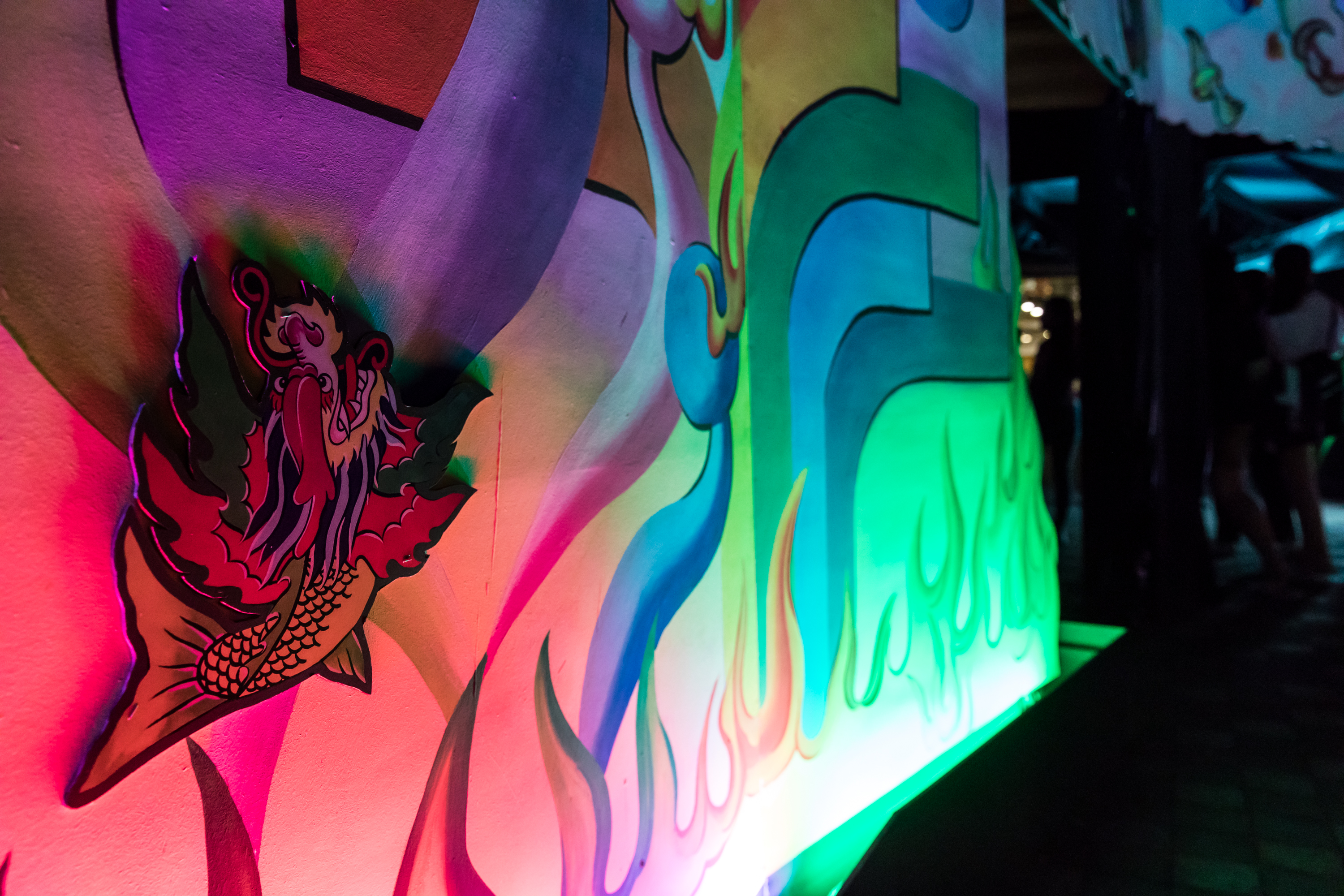

The website, constellation7.org, is interesting in that it keenly reminds us of an internet past, like a relic of digital folklore. What are your thoughts on the relationship between the internet and spatial-temporal contexts? How relevant is time and space on the internet, which can be used both as a tool for individual anonymity and for community-building?
I’m interested in the amateur 90’s aesthetics of this website—doesn’t it seem like it was made by a some very dedicated person who’d just found their way onto the internet? When I think of digital folklore, I’m drawing from the publication by net.art pioneer Olia Lialina and artist Dragan Espenschied. They conceive of digital folklore as the customs and aesthetics that developed in the early 1990s and 2000s as a result of users engaging with the personal computer. When we trace tech developments specifically to amateur attempts at using the internet, it decentres the notion of singular great figures often associated with technological histories, like Tim Berners-Lee for the World Wide Web, or Steve Jobs as a figure of innovation. How do we move away from hierarchical and monolithic imaginations of technological histories, where such figures are placed above users who are also active participants constituting its development? Digital folklore provides a frame to return that historiography back into the hands of users, and imagining it as a specific sort of culture with its own set of norms, traditions.
But moving beyond the aesthetic of this website alone, it’s actually also a pretty politically loaded website. Aesthetically, it’s ridiculous in its excess, but it also possesses much more unsettling and discriminatory fundamentalist ideology. You can almost imagine the profile of the person making this website. It inherits these problematics that come from a user’s own inhabited geopolitics and time frame. So despite the optimism often associated with early internet as a ‘free’ and ‘democratic’ space by users and corporations, it isn’t an innocent medium at all—it reproduces existing logics of power and potentially reinforces existing problematics.
When we look at media histories, the narrative tends to follow certain stages—for mass media we start with the printing press, and we’re hurtled towards radio, cinema, television, and eventually the internet. It follows this very linear progression, when in truth, things are much more messy. For instance, we tend to think of the camera and mass photography as emerging in the early 20th century, and the mobile phone a separate product from the late 20th century. This follows a rather linear Western frame, and simplifies the lived realities in other geographies: In India, mass photography never really arrived until more recently, with the availability of camera-equipped phones when they became an everyday product. Prior to that many of the working class and lower-middle class could not afford access to cameras or engage with photography in a manner that phone cameras allowed. It disrupts the linear ‘stages’ in West-centric media histories, and such recalibrations are what I’m hoping to explore more in the future, particularly for a Southeast Asian context.
This might be a good point at which to start talking about the residency you did with INTER—MISSION at Sim Lim Square as well. With this residency, quite a few media outlets and reviews noted that a concerted effort was made to work with the mall’s community. Did you start off with wanting to get clarity on particular questions or issues? If so, how did you find those interactions with the space, shopkeepers and shoppers?
For me the residency was a means of examining discourses of technology in Singapore by engaging with the sociotechnically dense site of Sim Lim Square. The media’s emphasis on a more human-interest, community aspect of the residency was always interesting for me, and I think it maybe reflects some Singaporean audiences’ expectations of art experiences—oftentimes, a kind of consumable sentimentality or relatable narratives are desired.
When Hal Foster put forward his critique of the introduction of anthropologic or ethnographic methods in contemporary art practice, he also wrote about how site-specific works can very easily lead to a Disneyfication of a space or a simplification of its narratives. This was something I was wary of going into Sim Lim Square—I wouldn’t frame the residency as a community engagement project, and to me it feels problematic to do so. That comes with the condescending image of a community lying passively in wait to be ‘enlightened’ by art or be the recipient of some immanent knowledge that the artist supposedly possesses just by virtue of being an artist.
Community engagement has its contexts, and Sim Lim Square felt a little different because it is a commercial space —
for me, it was very much about showing material support by abiding by the logics and language of the site, which meant engaging services from Sim Lim shops, or purchasing the goods there in the making of the work.
In the course of doing so, we naturally developed relationships with the people who worked there. Such experiences could be embedded within the final exhibition, but to me shouldn’t become a fetishized element that an entire work hinges on. I don’t believe extricating lived experiences from unsuspecting individuals for feel-good, consumable narratives was the intent of such a residency. This is why abstraction or unknowing is personally very important to me as well, because such relationships formed are private and need not be performed as narrativised spectacle for the sake of Art Week.
⁴ Cybwar (Gaming systems), Johann Yamin
2019
2019

You also picked out cracktros and the Paradox crack version of Spyro the Dragon 3 for our conversation. With these two things, the tension between legality and illegality is clear — and often, this tension remains unresolved. These are things you unpick in Cybwar (Gaming systems) as well. Talk us through the process of visualising a system that resists, by way of bouncing between different states, being captured. In particular, I’m interested in how you sought to repurpose the objects you used, such as artificial flowers and computer monitors, for these ends.
The video installation I made, Cybwar (Gaming systems), was this sprawling exploration of gaming histories—whether this was tied specifically to Sim Lim Square’s video game shops, the crack intros by warez groups when you boot up a pirated game, or looking into histories of video arcades and computer gaming in Singapore. Earlier on, I’d found an old copy of a B-grade Taiwanese video game called Cybwar at Upper Serangoon Shopping Mall while I was around for one of the Opening Day exhibitions. It got me interested in the aesthetics of these unknown, forgotten games, as well as the co-optation of nostalgia in the sale of better-known vintage titles, since Sim Lim Square also has a vintage gaming store.
More broadly, it also made me consider the wider network of old shopping malls as a site of playful action—it’s related to the 80’s ban on video arcades in Singapore; how PC shops at malls like Peninsula Shopping Centre began to illegally rent out hourly usage of their PCs for gamers’ use after the arcade ban was in place. The old CRT (cathode-ray tube) computer monitors I used are a very material reference to this moment; of illicit computer gaming as a stand-in for outlawed arcade gaming. I incorporated flowers into the work because it always seemed to me like Sim Lim Square inhabited a very masculine consumer logic. These fake anthuriums were to me a kind of vulvic symbol to counteract that. I wanted to bring in these ‘organic’ elements to disrupt the formal hardness of technological apparatus; create sensuous floral arrangements entwined with digital systems.
Threaded through the work is this idea of moving between the inside and the outside of systems; of literally gaming a system. I was thinking of illegal practices such as software piracy—during the 1990s and the early 2000s, one could easily get pirated video game CDs at Sim Lim Square, while anti-piracy measures were simultaneously being enforced through police raids. And of course the shops at Sim Lim Square would develop tricks like having informal networks informing each other of raids, or hiding the pirated CDs beyond their store premises and letting customers select games from folders, for instance. This tension between illegality and legality is always a sort of performative dance; a duet between offending parties and enforcers of legislation. For me, there is no ‘outside’ that cannot be co-opted or absorbed by the system. It’s a knowing transgression that involves a playfulness with ethical and moral norms or boundaries.
Video games were just the starting point for this exploration. There were so many things that I wanted to explore in relation to the mall, because it’s such a loaded space. Although we associate Sim Lim Square with technology, there are sex shops, and places that sell religious goods. It’s a very messy sort of ecology, and so the work inherits that logic as well through this media archaeology of video games.
Since we touched on the relationship between illegality and legality, let’s talk about Your Pink IC, a project you did in collaboration with art naming. The Singaporean pink identity card marks the bearer as a citizen of the country. In the project, the limitations of certain categories are challenged. For example the race on one of the cards is stated as “Other”, instead of any conventionally accepted racial categories seen commonly on the identity card. Identity is a broad, contested and often testy issue. In parodying such an important document, what sort of comments did you hope to make regarding the legality and legitimacy of identity labels?
It was art naming who approached me with the idea for the work, and we worked together to develop the concept further. I think I took on more the role of a designer; making the website, card template, and editing the images. People would email us the details they wanted reflected on the card, and we would create the image of that card and upload it to the Your Pink IC website. I had no control what people submitted to identify themselves on the ICs they made, but it was interesting for me to see what people chose. Some people submitted photographs of their pets, and others made more direct statements against the amendment. The project wasn’t so much an exploration into categories of identity as it was interested in the notion of citizenship and the interfaces that delineate belonging. If we had the ability to reinscribe these arbitrary and often problematic categories, what would these new horizons look like?
Perhaps we’ve already moved into the realm of post-representation, where the act of representing doesn’t have an indexical relationship to the political weight it possesses in its ability to shape discourses of identity.
So much of what we consume is algorithmically determined or filtered away, with each receiving only what they want to see. Thinking of what could lie beyond representation alone was something undergirding my involvement in the project as well. The work also took on another life as a performance piece by art naming.
⁷ Your Pink IC, Johann Yamin
2017
2017



1994
You selected the work Ocarina by Lin Hsin Hsin, and referenced the online Lin Hsin Hsin Art Museum whilst presenting Ludic Orphans at A Weekend Affair. Your own work explored digital cultures and histories in Singapore in the form of a lecture-performance. Tell us about how you approached this deep dive into the nebulous networks surrounding the virtual and our relationship with it, and why Lin’s work is a productive reference point within this exploration.
I didn’t think of it as a lecture-performance — I don’t know how I feel about the idea of myself performing. For me it was just a lecture, and that came together with an installation adapted from my Sim Lim Square work, both lecture and installation constituting Ludic Orphans.
Coming back to Ocarina and Lin Hsin Hsin’s virtual museum, I think it relates to what we spoke about earlier with regard to building on the vocabulary for new media work in Singapore. It brings up questions such as whether Lin’s digital works from the 90s are even worth considering within broader discourses of art history. Lin Hsin Hsin is very much a part of the discursive fabric of art history in Singapore—her paintings can be found in the Siapa Nama Kamu? exhibition at the National Gallery Singapore or in the NUS Museum collection. Despite that, not as much attention has been given to the technologised aspects of her practice. I’m not interested in placing a value judgement on her digital works or constructing a canon around it, but having it as a point of departure to think about the complexities and contrivances in thinking about historiographies for new media practices in Singapore and maybe even the region.
I don’t think Lin herself uses the term ‘digital art object’ for Ocarina. I’m partially drawing on Yuk Hui’s idea of the digital object: Something that rests behind the screen and is governed by systems and data. Given that definition, Ocarina is very much a digital object—and at the same time, Lin was insistent that people view it as an artwork by remediating the semiotic outcome of the physical museum.
The lecture aspect of Ludic Orphans sought to broaden the discursive space of the installation for A Weekend Affair. Thinking about the problematics of historiography for new media art is related to how we’ve come to understand discourses of technology in the present—during the presentation, I referenced a text from T. K. Sabapathy, where he writes about Lin’s work in one of her exhibition catalogues. He notes how, to his knowledge, artists from Southeast Asia had not engaged with technology in a sustained manner at that point in time in 1994. One of the reasons he posited was that it was because technology was perceived as a kind of Western incursion, and therefore seen as antithetical to cultural preservation. Thinking about what constitutes ‘modern’ technology pulls us back to the perennial question of modernity, particularly for a region marked by colonial technology.
⁹ Ludic Orphans, Johann Yamin
2019
2019

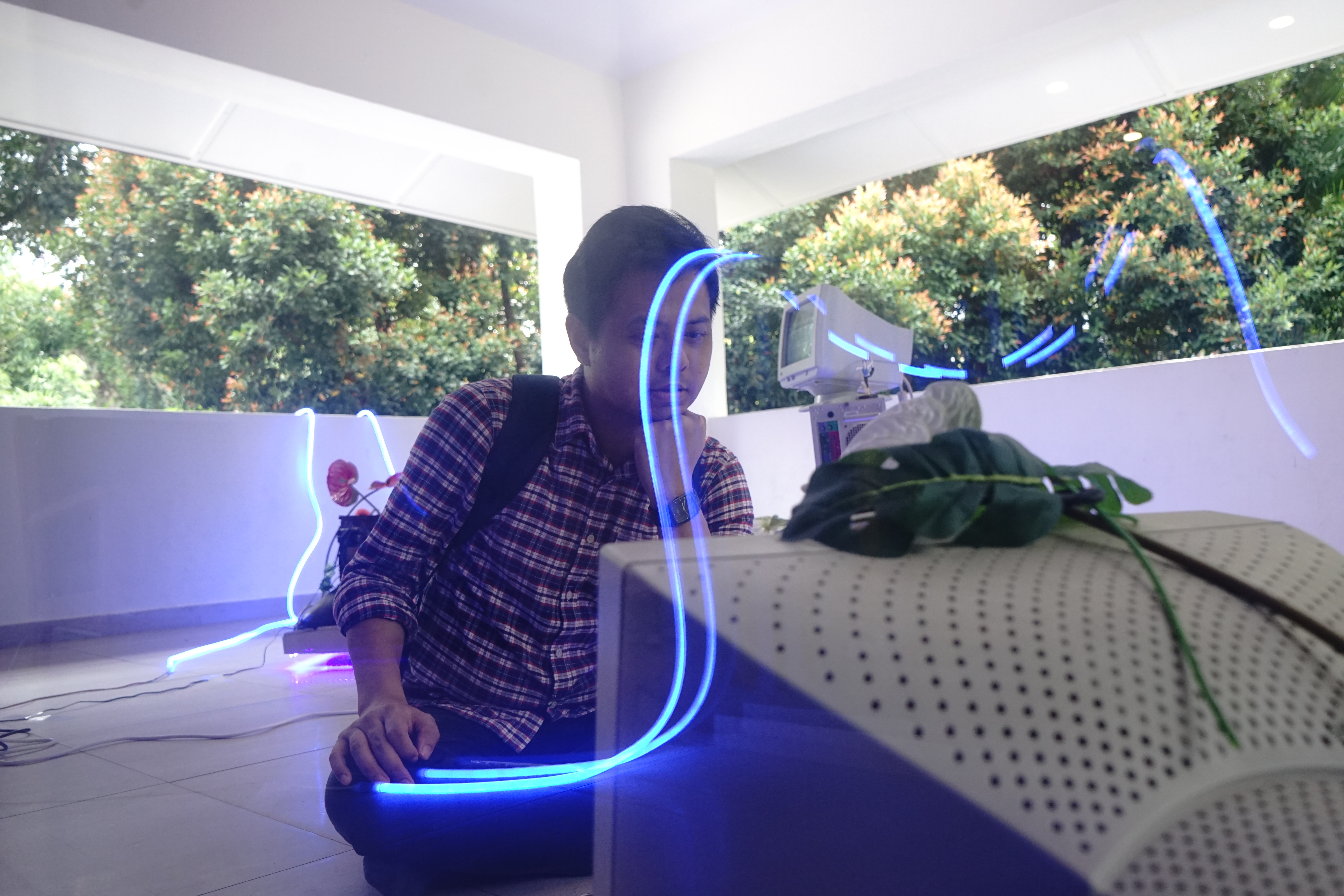
In a previous conversation we had, you spoke about how the differences between the digital and reality are marginal, and that the lines between the two are not as defined as we would like to think them to be. Your work has brought the digital into a physical domain in a couple of different formats, and I was wondering if despite the similarities between the digital and the real, if you see this as a process of translation and transformation?
I don’t see myself as translating anything in particular — I wouldn’t even say I’m a ‘new media artist’ specifically.
Working with technology is simply a condition of the contemporary, and there’s no need to qualify such practices as being different, or to silo oneself away within a specific category.
When I talk about new media art or about building upon the vocabulary around it, I’m using that more as a heuristic category to hopefully contribute to the development of its discourse. If we’re not historicising these practices, how are we going to adequately theorise about postinternet aesthetics, for instance? It certainly doesn’t arrive as a floating signifier without a past; a ‘cutting-edge innovation’ from nowhere. I’m very invested in tearing down these notions, of the eternal newness of new media. It’s not about trying to bridge, translate, or transform the digital into something ‘real’ or ‘tangible’ to us. Technology has long been entangled within our lives through a host of manifestations, and I just happen to be working with those meanings.
